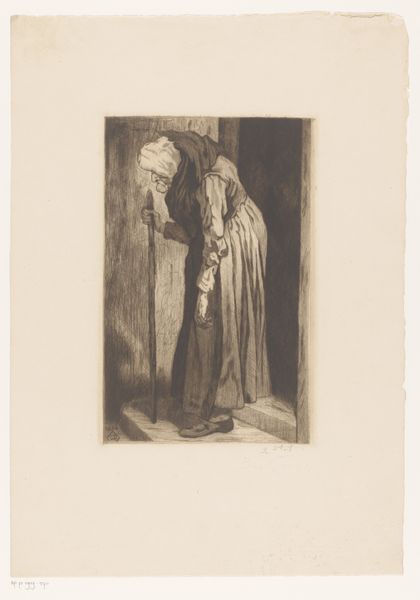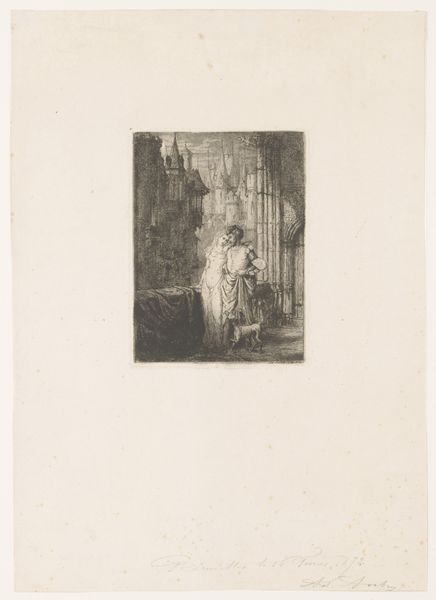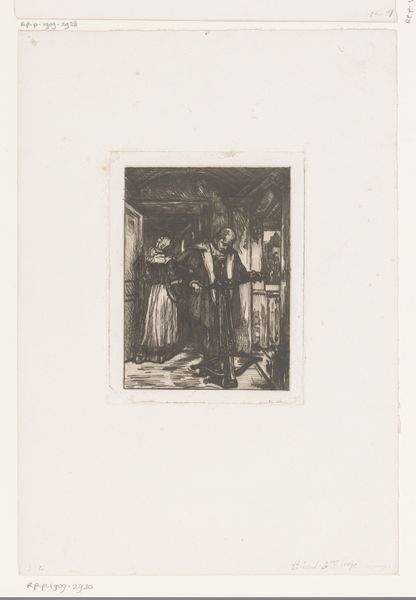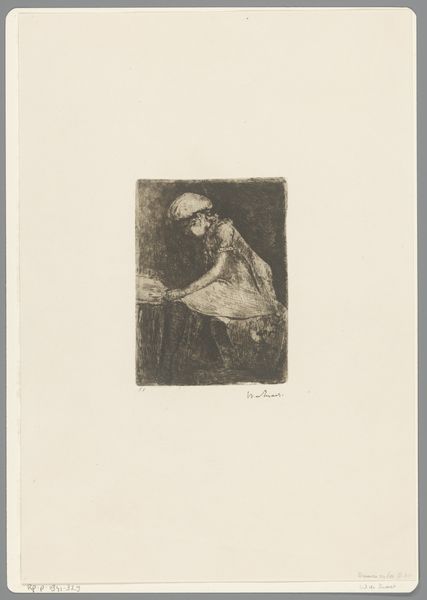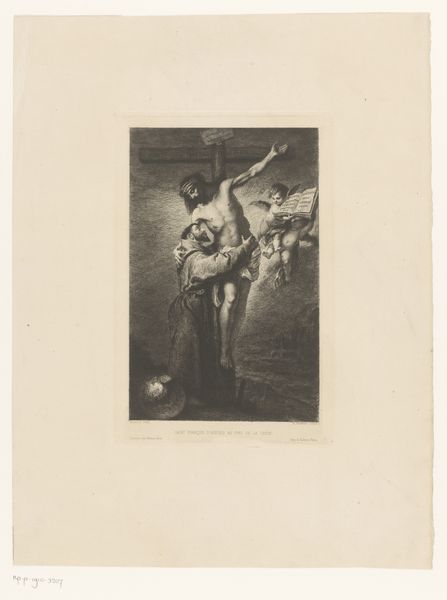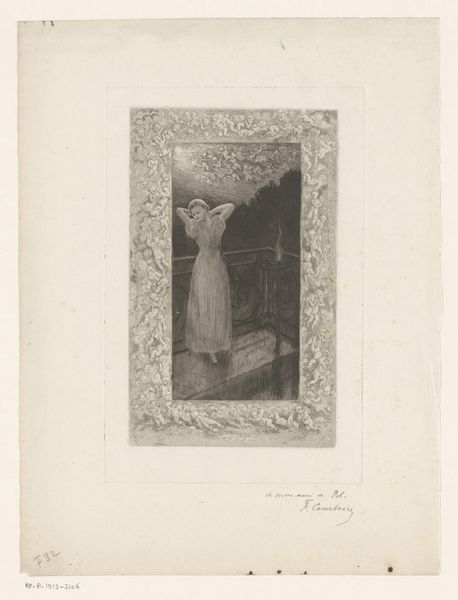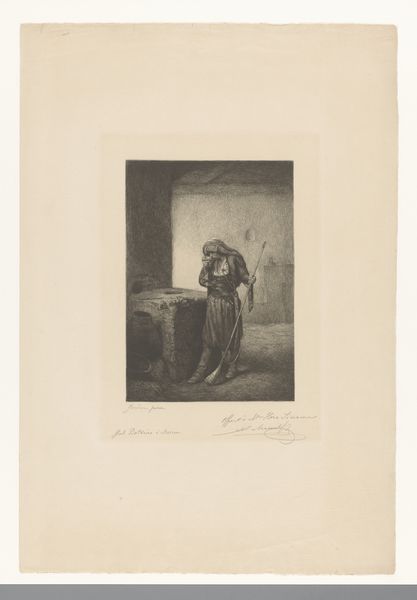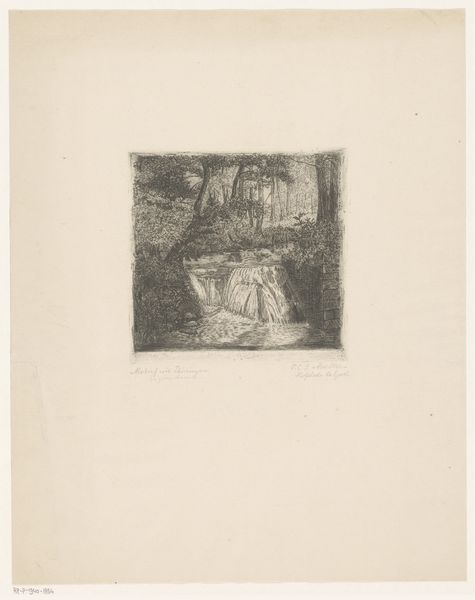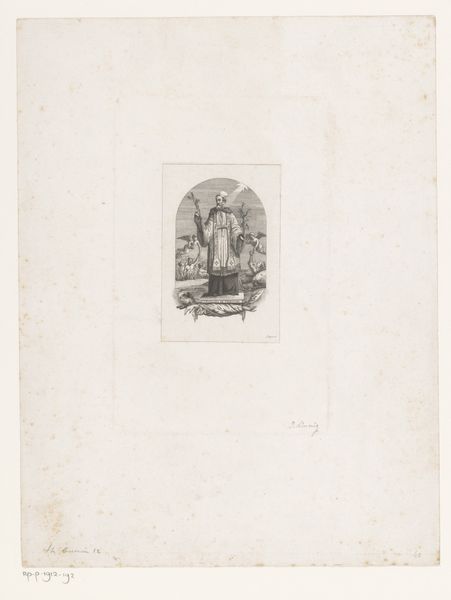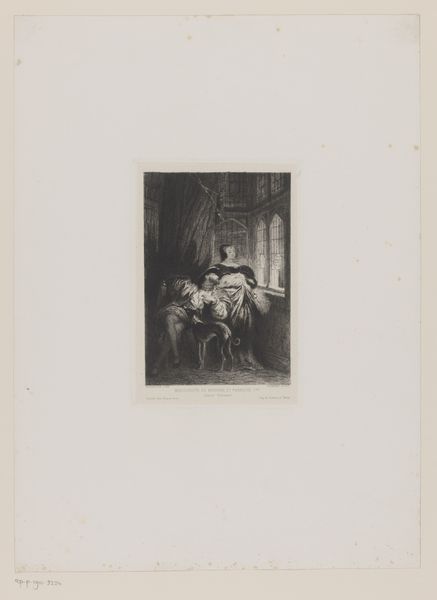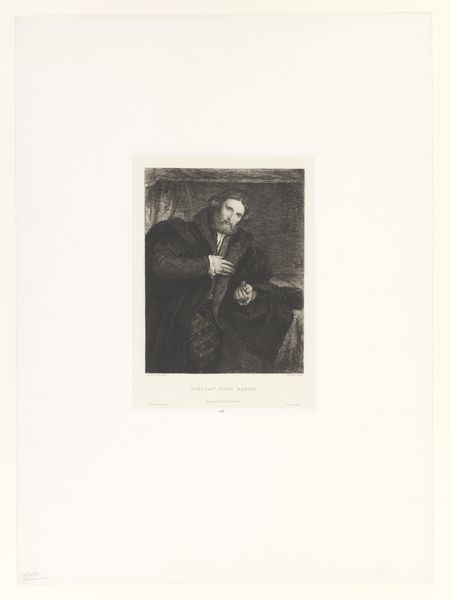
Dimensions: height 137 mm, width 107 mm
Copyright: Rijks Museum: Open Domain
Curator: This is Charles De Groux’s, "Oude vrouw met stok," or "Old Woman with a Stick," dating back to 1854. It's an intaglio print; specifically, an etching. Editor: The starkness hits me immediately. It's somber, almost unsettling. The figure is so fragile, caught in this shadowy doorway. You can practically feel the weight she carries, both physical and… existential. Curator: De Groux was very interested in Realism. Look at the detail etched into her weathered face and worn clothing. This piece reflects the genre painting that was part of his approach, really trying to present images of ordinary life in the period. It is an unvarnished glimpse into the life of the elderly poor. The Romanticist approach also lingers here with his clear compassion towards a lone figure. Editor: And what a masterful way he uses line to describe those fabrics! Think about the paper this was printed on too—the way that the fibres interact with the ink, the kind of pressure needed on the plate to create that depth of tone… it really gives a sense of the material world this woman inhabits. We have here what feels like, from a technical perspective, a humble print, of perhaps an unspectacular subject, but its material impact is significant in its directness. Curator: Absolutely. And De Groux intended to connect with audiences directly through the images of everyday people. It’s interesting how the rise of printmaking allowed for the mass dissemination of such imagery, further shaping the perception—and, perhaps, the politicization—of poverty during the 19th century. Consider too, the etching work of artists like Daumier whose social commentary was enabled and strengthened by his printmaking practice. Editor: The cane seems worn too. I bet it had to be whittled down into shape just to give this old woman something stable for her to hobble with around town or in the countryside where they all most likely knew each other back then! What sort of shop crafted these humble materials and what would it feel to go get one made. Curator: Such depictions of working class poverty grew into important forms of social commentary and it’s crucial for us today as well, not only to acknowledge historical realities, but also the artist’s decisions on how to bring this portrait to the wider world, both through subject, and artistic practice. Editor: Yes, a powerful convergence of material reality and artistic intention. That’s something I won’t soon forget.
Comments
No comments
Be the first to comment and join the conversation on the ultimate creative platform.

